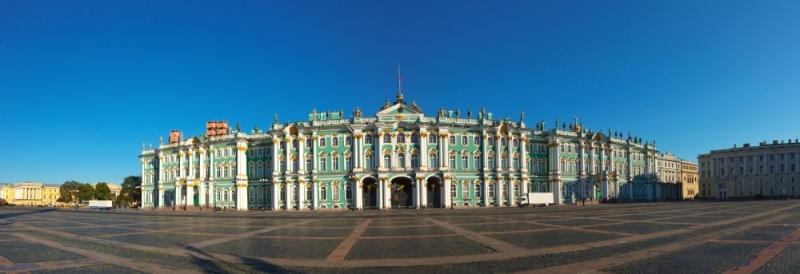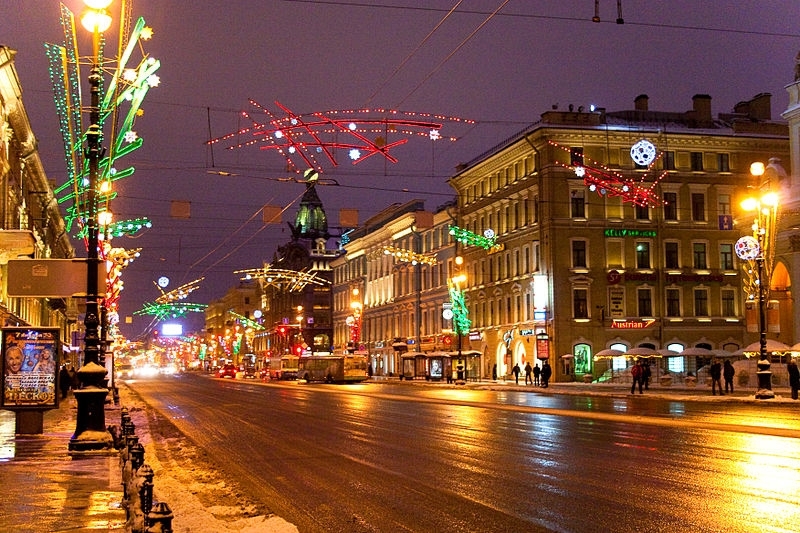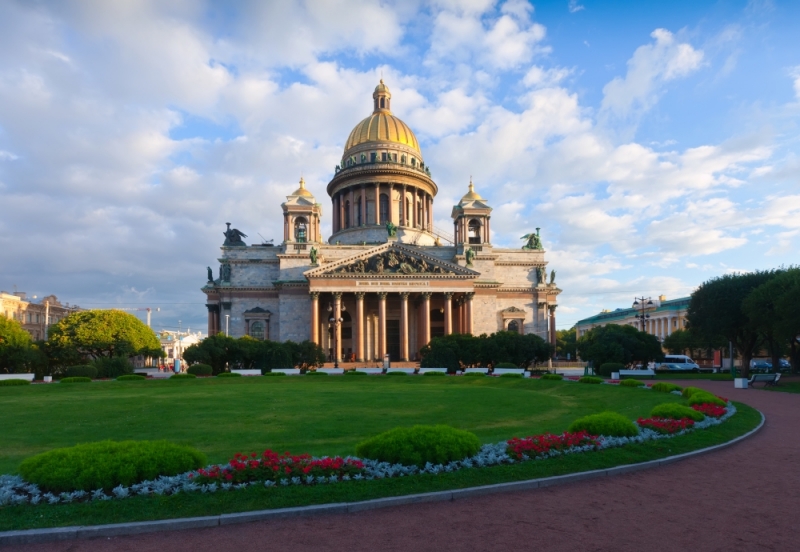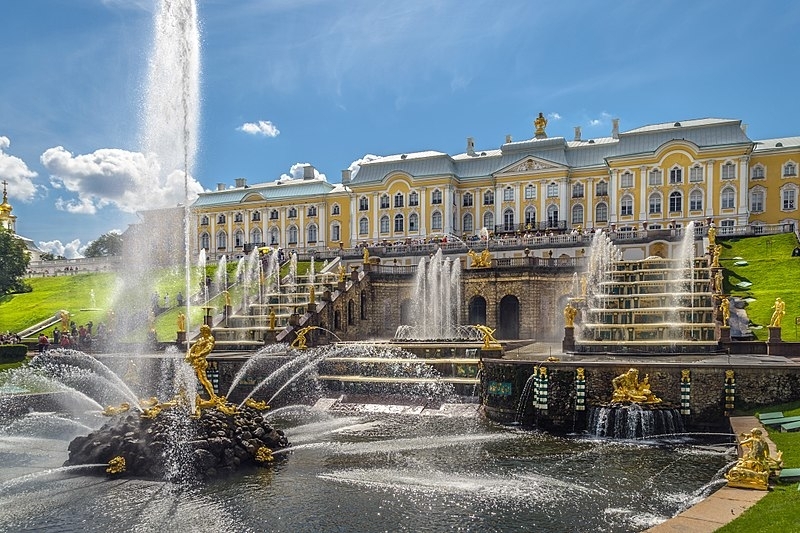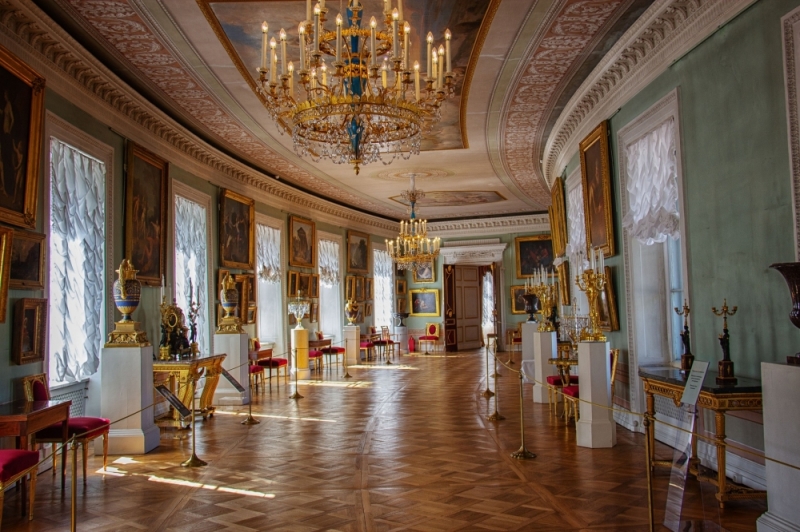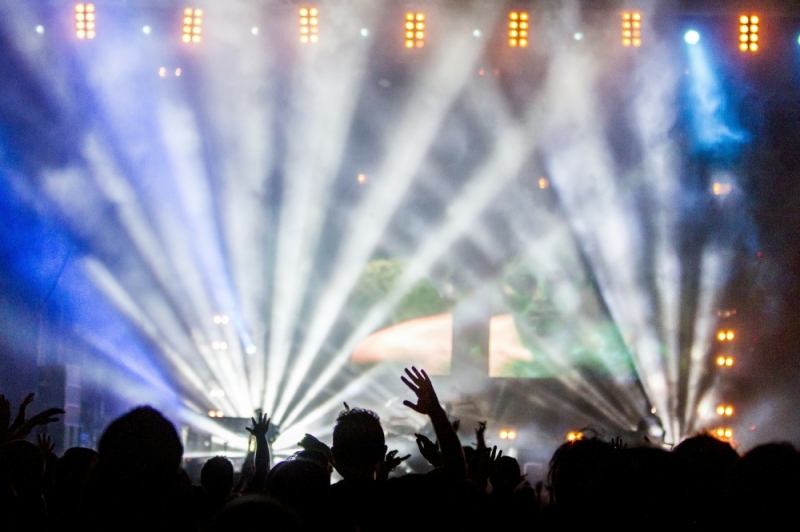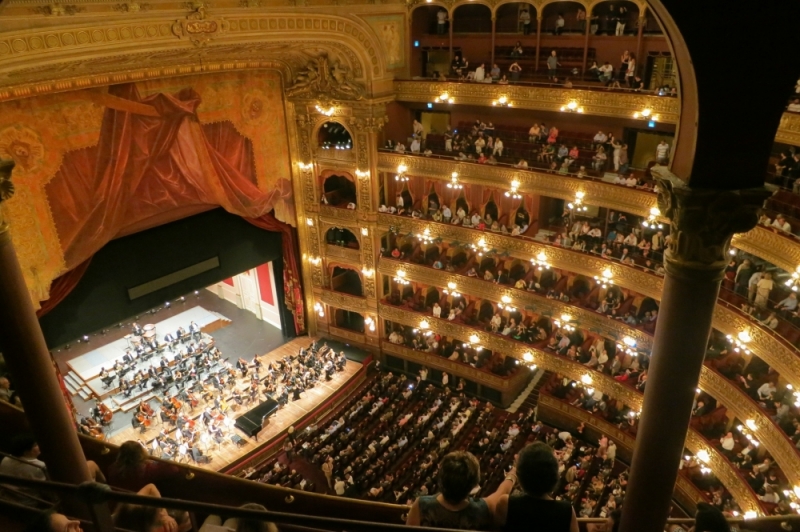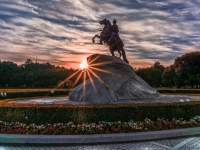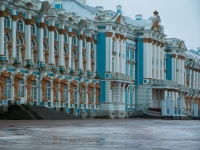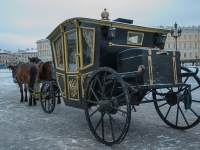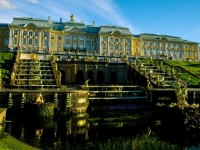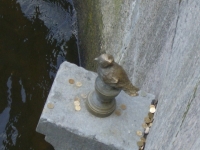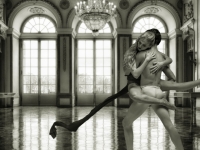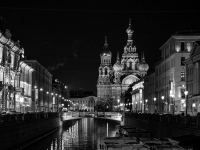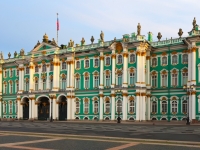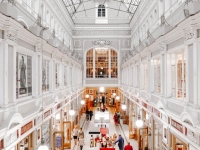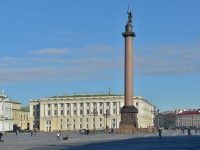St. Petersburg its origins
St. Petersburg , built starting from 1704 on the water and capital of the Tsars' Empire, was commissioned by Peter the Great as a "window to the West". Also called the capital of the North or the city of white nights, today it is a city that represents a wonderful blend of Russian and European cultures and traditions. Despite being a fairly young city, it has managed in a short time to become a true treasure of world culture. The first museum and the first monument of present-day Russia was created here. Today in St. Petersburg there are more than 250 museums and it is without a doubt a unique city, with an irreplicable atmosphere to which it is impossible to remain indifferent. The monumental architectural complexes, the marvelous courtyards, the magnificent parks, the one-of-a-kind museums, all this arouses great interest among tourists from all over the world. A UNESCO World Heritage site since 1990, today it boasts a resident population of around 5 million. Proclaimed the capital since 1712 of the reign of the Romanov dynasty, it was the scene of the most important events of the Russian revolution. However, with Lenin's coming to power it lost its role as capital forever. A federal city, it can be considered the northernmost metropolis in the world.
What see
Saint Petersburg is a beautiful city, with Tsars who loved it to the point of leaving incredible monuments and unique in their beauty, majesty and value to make it, today, a real European capital of culture, with tourists who visit it every year like Paris. Below, our personal list of the 8 wonders that should not be missed in your visit to this incredible city:
The first stop cannot fail to be at the Hermitage Museum , one of those museums that should be visited at least once in a lifetime. Located on the banks of the Neva, it is one of the jewels of this beautiful city. Built in the Winter Palace, which was the imperial residence at the time of the tsars, it is one of the oldest museums in the world since already in 1764 Caterina the Great wanted to build, next to the Palace, another building where she could host the works of art. art he was collecting. The new building took the name of Petit Ermitage. The Hermitage in St. Petersburg is today a huge museum. It is in fact a large museum complex that includes several buildings built at different times and that is why I recommend you to get a map and to prepare an itinerary of what you want to see ... visiting it would mean taking days. It houses works of immense value, including masterpieces by Pablo Picasso, Henri Matisse, Titian, Veronese, Leonardo da Vinci, Raphael, Giorgione, Caravaggio, Tiepolo, Paul Cezanne, Camille Pissarro, Edgar Degas, Vincent Van Gogh, Paul Gauguin, Claude Monet , Auguste Renoir. The immense collection of the Hermitage (more than three million works) includes artifacts and works of art ranging from the Stone Age to the twentieth century, including archaeological finds, works of applied art and coins. In visiting the museum, as well as laying your eyes on the works of art, look around you because the interiors alone are masterpieces of art created by great Baroque artists.
Nevsky Prospect
A slow and relaxing walk along the main artery, that is along the Nevsky prospect . The entire center develops along this path, 4.5 km long, with splendid buildings, theaters, churches, historic shops, romantic bridges and suggestive squares. Animated by day and by night, it is very popular with residents of its cafés, restaurants and cinemas. While strolling you will be able to admire masterpieces such as the Literary Café (19th century atmosphere), the Stroganov Palace (an example of Russian Baroque), the Russian National Library, the Aničkov Bridge (with the statue of horses and tamers), Ostrovskij Square (with the monument to Catherine II), the Cathedral of Our Lady of Kazan (houses the miraculous image of Our Lady of Kazan) and the sumptuous Beloselskij-Belozerskij palace. Untouched as it was built in 1903, Eliseevskij, a luxurious art nouveau grocery store along the Nevsky Prospect, is not to be missed. Became famous thanks to the founder, the businessman Grigorij Eliseevaveva, was always supplied with numerous foodstuffs from all over the world, including many types of tea and coffee, all kinds of cereals, olive oil, truffles, and much else. Fitted by a wealthy clientele, they made a fine show of themselves, available and competent salesmen always polished in a beautiful livery. Today it sells food and wine products imported from all over the world, plus its own production line of fresh products and souvenirs.
St. Isaac's Cathedral
St. Isaac's Cathedral began to be built in 1710 under Tsar Alexander and was completed by Tsar Nicholas I between 1818 and 1858. Today it presents itself as one of the most imposing and sumptuous cathedrals. Its numbers are record-breaking: 111.2 meters long by 97.6 meters wide, a surface area of 4,000 m2 which can accommodate 14,000 people, 112 monolithic columns in red granite weighing approximately 100 tonnes. which support the 4 porticoes, 350 statues populate the roof, 100 kg of gold sheets cover the 21.8 meter height of the dome, interiors covered in gold, 14 types of marble and bronze, malachite and lapis lazuli, to complete the Opera. The fresco under the central vault depicting the Virgin between angels and saints, the work of the painters Brjullov and Bruni, has a size of 816 m2. From the 262 steps of the colonnade you can admire a splendid panorama of St. Petersburg. The Cathedral of the Savior or the Resurrection of Christ (official name) is one of the best-known symbols of St. Petersburg. Built between 1883 and 1907 on the model of the Moscow cathedral of St. Basil, it is recognizable for its multiple onion domes among which the 81 m high bell tower stands out and its decorations with colorful enamels and ceramic and colored glass tiles. Above all, not to be missed is the beautiful collection of mosaics that completely cover the internal walls.
Peterhof complex
Conceived by Pietro I who dreamed of a palace-like residence at Versailles, the Peterhof Complex , built between 1723 and 1750, is a complex of palaces, gardens, fountains, waterfalls and water features. With rich and opulent interiors, gold decorations, frescoed ceilings, porcelain, precious silks, mirrors and 27 rooms: the Quercia Studio is not to be missed, where some objects belonging to Pietro the Great are exhibited. The main attraction of Peterhof is its lush park with 150 fountains and 4 waterfalls, among which the most famous is the Great Waterfall, right in front of the Palace, which among golden statues (well 255) and water jets (138 for the precision) gives rise to the 400-meter long maritime channel that connects the Palace to the sea. Spectacular is the "Fountain of Samson struggling with the lion" from whose jaws rises a water jet of 21 m., The official annual opening of the fountains (late May) is celebrated with music, fireworks and shows . In 1703, Peter the Great, on the islet of the Neva delta, started the construction of the Fortress of Saints Peter and Paul . Used as a political prison, until 1917. It is accessed through the door of Pietro and houses, in addition to military buildings, also a mint and, above all, a cathedral dedicated to Saints Peter and Paul which has a 122 m high bell tower with a golden spire is surmounted by an angel holding the cross. Inside the monumental tombs of the Romanovs, from Pietro the Great to Nicola. Here, in summer, on the beach you can see many St. Petersburg sunbathing.
Winter Palace
The Winter Palace is definitely the most famous monument in St. Petersburg. Winter residence of the tsars, it owes its current construction (1754-62) to Bartolomeo Rastrelli, at the request of the empress Elisabeth. Located on Piazza del Popolo, at the center of which is the column that celebrates Alexander's victory over Napoleon, it has a white and green knit facade, decorated with 400 Ionic columns. The magnificent interiors (1057 between rooms and rooms), are a true masterpiece of Baroque art, and were redesigned with the restructuring of 1837 under the reign of Catherine the Great. Also to Catherine the Great is the construction of the Petit Hermitage, the first of the five buildings that gave way to what is the current Hermitage Museum. Today the palace is an integral part of the Hermitage Museum. In St. Petersburg, in addition to visiting the monuments and museums, you should not fail to make a stop at the famous cat in Malaya Sadovaya Street , with its coin toss while making a wish, and a boat ride to the wonderful center channels .
Movida and entertainment
From the end of May to mid-July, you can experience the famous White Nights of St. Petersburg , Here the sun, due to the latitude far to the north, remains high for a very long time, with even half an hour of real darkness. So 24 hours, or almost, to enjoy the St. Petersburg Monuments of "day" and live the "night" in the clubs, which for the occasion remain open 24h, plus a full calendar of events, festivals and night celebrations. You can also stroll, immersed in the stupendous and unique atmosphere given by the palaces, domes and churches that for the occasion are colored, the whole "night", a soft pink thanks to the crepuscular light. Light that, on the waters of the Neva, then creates very romantic reflections. In the many typical restaurants enjoy a typical Russian dinner, based on fish soup, shashliki, bliny, all naturally accompanied by vodka Tsarskaja. Here, for lovers of nightlife, you can find alternative concerts and live rock music, as well as jazz and art clubs, where you can drink a beer and socialize without any difficulty and every weekend there are numerous festivals scattered throughout the center . Among the trendy clubs (dress elegant) there are the Buddha Bar, the XXXX club (recommended Friday and Saturday night), the Nebar and the Rossi's (fairly crowded even during the week). The Fidel is one of the most famous and fun bars in St. Petersburg, where the climate is extremely friendly, cheap prices, music ranging from rock to commercial and lots of people who want to dance and socialize all night long! The Rossi's Club is a nightclub near Newskij Prospekt, located right on Via Rossi. It is now a landmark in St. Petersburg's nightlife frequented by an international audience (the average is between 18 and 30) and has two dance floors and great music. If you love karaoke there is a dedicated room here. The Papanin is one of the most popular fashion clubs, which hosts entertaining shows and parties. Due to the above-average cost of entry, it is frequented almost exclusively by wealthy Russians, and only by a few foreigners. Part of the famous chain that is also present in other cities like New York, the Coyote Ugly is a disco bar, where, as in the homonymous film, beautiful girls serve to drink and dance on the bar, with the bartender inciting the crowd to drink and have fun (recommended, to avoid the queue at the entrance arrive before 11.00 pm). The Griboedov is one of the most popular nightclubs in St. Petersburg and is located in an old bomb shelter. Also a cultural center, in which exhibitions, concerts, dj-sets and even banquets are organized, dedicates each evening to a different musical genre, from funk to soul, to rock and indie. To mention again Il Purga (pub / goliardic club where to celebrate New Year's Eve every night of the year), The Money-Honey (disco-style country pub located near the Gostinyj Dvor underground station), Metro Club (near the underground station Ligovskiy Prospekt is the largest and most famous nightclub in St. Petersburg, frequented by young people with an average age of around 18-20 years), Havana Club (small disco bar located next to the Republic of Coffee), Akakao (located in the center of San Petersburg offers a large number of cocktails and good music) ... and many others that you will discover once there.
For fans, instead, of theater or concerts or a good ballet , in St. Petersburg you can consult the programs of the concert halls of the St. Petersburg Philharmonic, of the Mariinsky theater, of the Mikhailovskiy theater, of the Jazz Philharmonic, of the San Opera Petersburg of the Palace of Ice and the Concert Hall Oktyabrskiy (where normally both host concerts of rock and pop music).
If you are in San Pietrourgo you cannot not spend 1/2 day on your physical and mental health by going to a beautiful Banja (Sauna) . For the Russians they are a true passion and one of the most important traditions for centuries: a favorite pastime as well as a symbol of health, mental and physical purity. 10 minutes in a cabin up to + 95 ° alternating with a bath in the icy water of an outdoor pool or a dip in the fresh snow. In many of these you can also enjoy a honey massage or a coffee scrub, yogurt and ginger. In St. Petersburg I recommend the Sokos Bridge, located in alley Birzhevoi 2-4 on the island of Vasilio. Here you will also have access to the spa which has about ten types of sauna: Russian, Finnish, Turkish, stone and even a room where the temperature remains constantly at -10 °, for a quick stop after one of the sauna sessions. Take a couple of hours of absolute relaxation, you won't regret it !!
Climate, Curiosities and Advice
Climate: St. Petersburg is located at the same latitude as the city of Oslo, in Norway and is characterized by a continental type climate, therefore, it knows a great thermal excursion between winter and summer with long and rigid winters and summers with pleasantly warm temperatures. Autumn and Spring are relatively short and are rather cold and wet. In particular, Spring, as in Moscow, arrives rather late, and the heat and good weather do not overlook before May, with fresh mornings and the sun giving a pleasant temperature in the middle of the day. June, July and August offer a beautiful combination of sun and a pleasant warmth. In this period the sun sets only a few hours and the long days allow you to devote more time to discovering this ancient Imperial Capital and its monuments. In autumn in St. Petersburg, temperatures drop rapidly as the day shortens and already at September warm clothes are needed. From November to April, St. Petersburg is dominated by cold and dullness, with recorded temperatures ranging between -8 ° and 1 in January and February and -2 and 3 in March and April. The best months to visit St. Petersburg and admire its white nights and for swimming are definitely summer ones, especially July and August.
Curiosity: The city founded by Peter the Great in time has not always been called St. Petersburg, but Petrograd since 1914 and Leningrad (in honor of Lenin) since 1924 and it took a popular referendum in 1991 to give it back its original name. Also in St. Petersburg you can go hunting for a bit of luck: placed on a stone pedestal on the stone link between the riverside and the bridge, there is a small bronze monument dedicated to Chizhik-Pyzhik, a small bird of the family of siskins. By flipping a coin and making sure that it stops on the pedestal of the siskin without falling, this allows a wish to come true. If during your visit to the Hermitage Museum you happen to see a cat, don't worry, they were wanted by the Empress Elisabeth from the 17th century to combat the problem of rats and, over the centuries, have become at least as famous as the museum.
Curiosity: The city founded by Peter the Great in time has not always been called St. Petersburg, but Petrograd since 1914 and Leningrad (in honor of Lenin) since 1924 and it took a popular referendum in 1991 to give it back its original name. Also in St. Petersburg you can go hunting for a bit of luck: placed on a stone pedestal on the stone link between the riverside and the bridge, there is a small bronze monument dedicated to Chizhik-Pyzhik, a small bird of the family of siskins. By flipping a coin and making sure that it stops on the pedestal of the siskin without falling, this allows a wish to come true. If during your visit to the Hermitage Museum you happen to see a cat, don't worry, they were wanted by the Empress Elisabeth from the 17th century to combat the problem of rats and, over the centuries, have become at least as famous as the museum.
Advice: the first advice, perhaps trivial, but important, is to check, before leaving, that you have a passport that has not expired and a valid visa, because although St. Petersburg is a city that is culturally very close to Europe, it still remains in Russia . Before leaving, check the exchange rate in rubles. Usually it is not convenient to change them at home, but as soon as you arrive at the airport, but never to unofficial touts. Remember that St. Petersburg has a time zone that may be different from your Christmas city (for example, compared to Rome you may have to move the hands two or three hours later depending on the time of year). Pay attention to the wallet (never in the back pocket) because there are plenty of pickpockets with excellent dexterity. Rule is to negotiate with taxi drivers as to leave at least 10% as a tip. Always keep with you a map of the city (with the address where you are staying highlighted) and a map of the metro. Finally remember that the tap water is not drinkable. Expiring in the obvious, pack appropriate clothing for the time of year and weather forecasts. For lovers of nightlife Warning: the selection at the entrance of the premises is made practically in every club in St. Petersburg and, often, it consists of a real search with a metal detector. Don't worry, it's normal here.



